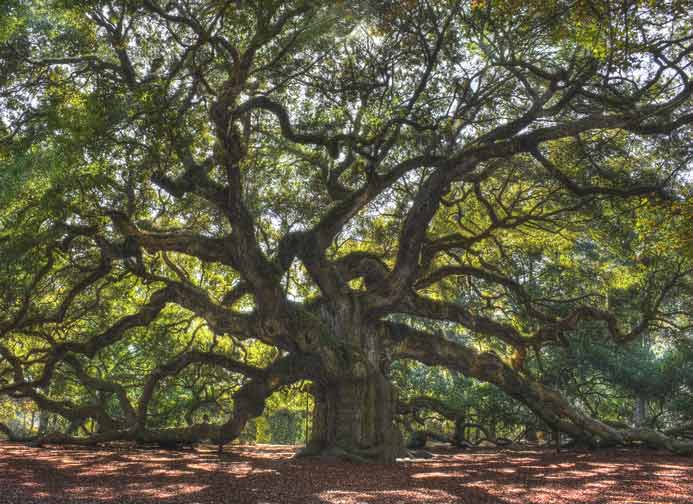5 Trees That Can Withstand High Winds
Admin • September 21, 2018

If your yard is very open and exposed to high winds, you may have a lot of trouble with tree damage after storms. You may worry about branches cracking and compromising the trees' health — while also posing a risk to your home and landscape. If you are thinking of planting some new trees, then you'll be pleased to know there are varieties that stand up well to high winds and are less likely to suffer damage.
1. Live Oak
The live oak is a classic shade tree, thanks to its broad canopy and dense foliage. Its leaves are deep green in color, and it produces brown acorns that attract wildlife like squirrels, deer, and raccoons. Live oaks are incredibly tolerant not only of wind, but also of salt spray, compacted soil, and shade. They only need about four hours of sunshine per day to thrive.
Live oaks are large — they can be up to 80 feet tall
when mature. They're very long-lived, so planting one in your yard is a nice gesture to future generations.
2. Flowering Dogwood
If you're looking for a smaller, flashier tree, the flowering dogwood might be a good choice. It becomes covered in white, pink, or red flowers in the spring, and in the fall, its leaves turn purplish. Flowering dogwoods only grow to about 25 feet tall, according to the University of Illinois, making them a good choice for smaller yards.
Although flowering dogwood trees withstand wind well, they are quite picky about soil quality and will not tolerate drought or pooling water. These trees are also susceptible to diseases like anthracnose and powdery mildew disease. Keep the tree well-trimmed and avoid over-watering it to protect against disease.
3. American Beech
Another large, wind-resistant tree to consider is the American beech. This tree is known for its silver bark and dense canopy. American beech trees require well-drained, acidic soil and won't grow well in grassy or compacted areas.
One benefit of planting an American beech tree is the edible beech nuts it produces. These trees also require very little in the way of pruning. Just trim away dead and damaged branches every now and then. The only pest that frequently bothers American beech trees is aphids, and you can easily remove aphids by spraying them off with water.
4. Bald Cypress
Sometimes a hurricane rips through an area, leveling most trees, but leaves the bald cypress trees in place. These strong, sturdy trees have broad, shade-producing canopies and reach a height of 50 to 70 feet when mature, according to the Arbor Day Foundation. They do require full sunlight and can tolerate periods of both flooding and drought.
Bald cypress trees are deciduous conifers. In other words, they have needle-like leaves, but they lose these leaves each fall after they turn reddish-brown. Their brilliant fall color adds character to your landscape.
5. Southern Magnolia
Southern magnolia trees are known for their wind resistance and also for their gorgeous flowers. Unlike most flowering trees, the southern magnolia is not small — it can grow up to 80 feet tall. In the spring, the tree develops huge, white flowers. Its shiny green leaves attract a lot of attention in the summer, and its small, red seeds attract squirrels and rabbits.
Southern magnolia trees like full sunlight. They're not picky about soil type and can tolerate some flooding.
Instead of continually dealing with wind damage, plant trees that are more tolerant of high winds. If you need help pruning or otherwise caring for your new trees, contact
Horton Tree Service. We offer 24-hour emergency service and can also provide a free quote.







